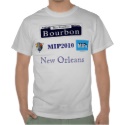|
|
Reference type: Journal
Authors: Azenha M, Schillinger E, Sanmartin E, Regueiras MT, Silva F, Sellergren B
Article Title: Vapor-phase testing of the memory-effects in benzene- and toluene-imprinted polymers conditioned at elevated temperature.
Publication date: 2013
Journal: Analytica Chimica Acta
Volume: 802
Page numbers: 40-45.
DOI: 10.1016/j.aca.2013.09.030
Alternative URL: http://www.sciencedirect.com/science/article/pii/S0003267013012324
Abstract: The preparation of polymers imprinted with common aromatic solvents such as benzene and toluene is an under-exploited subject of research. The present study was aimed at the understanding of whether true solvent memory effects can be achieved by molecular imprinting, as well as if they are stable at elevated temperature. A set of copolymers, comprising low and high cross-linking levels, was prepared from four different combinations of functional monomer and cross-linker, namely methacrylic acid (MAA)/ethylene glycol dimethacrylate (EGDMA), methyl methacrylate (MMA)/EGDMA, MAA/divinyl benzene (DVB) and MMA/DVB. Each possible combination was prepared separately in benzene, toluene and acetonitrile. The obtained materials were applied as coatings onto nickel-titanium (Ni-Ti) alloy wires which were incorporated into solid-phase microextraction devices and finally tested for their ability to competitively adsorb vapors from the headspace of an aqueous solution containing a few volatile organic compounds. Porosity analysis showed that, regardless of the solvent used, only a high cross-linking level permitted the preparation of mesoporous copolymers (BJH radius typically in the range 13-15 nm), a requirement for providing accessibility to the targeted nanoscale-imprinted cavities. A noticeable exception was, however, observed for the MMA/DVB copolymers which exhibited much diminished BJH radius. The porosity data correlated well with the extraction profiles found, which suggested the presence of benzene-imprinted sites in all the highly cross-linked copolymers prepared in benzene, except for the MMA/DVB copolymers. Concerning the effect of an elevated conditioning temperature on the memory-effects created by the imprinting process, the results were clearly indicative that the tested copolymers, including the more robust highly cross-linked ones, are not suitable for high temperature applications such as solid-phase microextraction coupled to gas chromatography
Template and target information: benzene, toluene
Author keywords: Benzene, toluene, imprinted polymers, Gas-phase, Memory-effect
|


 MIP Workshop WorldTour shirt
MIP Workshop WorldTour shirt







 multi MIPs logo mug
multi MIPs logo mug







 multi_mips_logo_tie
multi_mips_logo_tie






